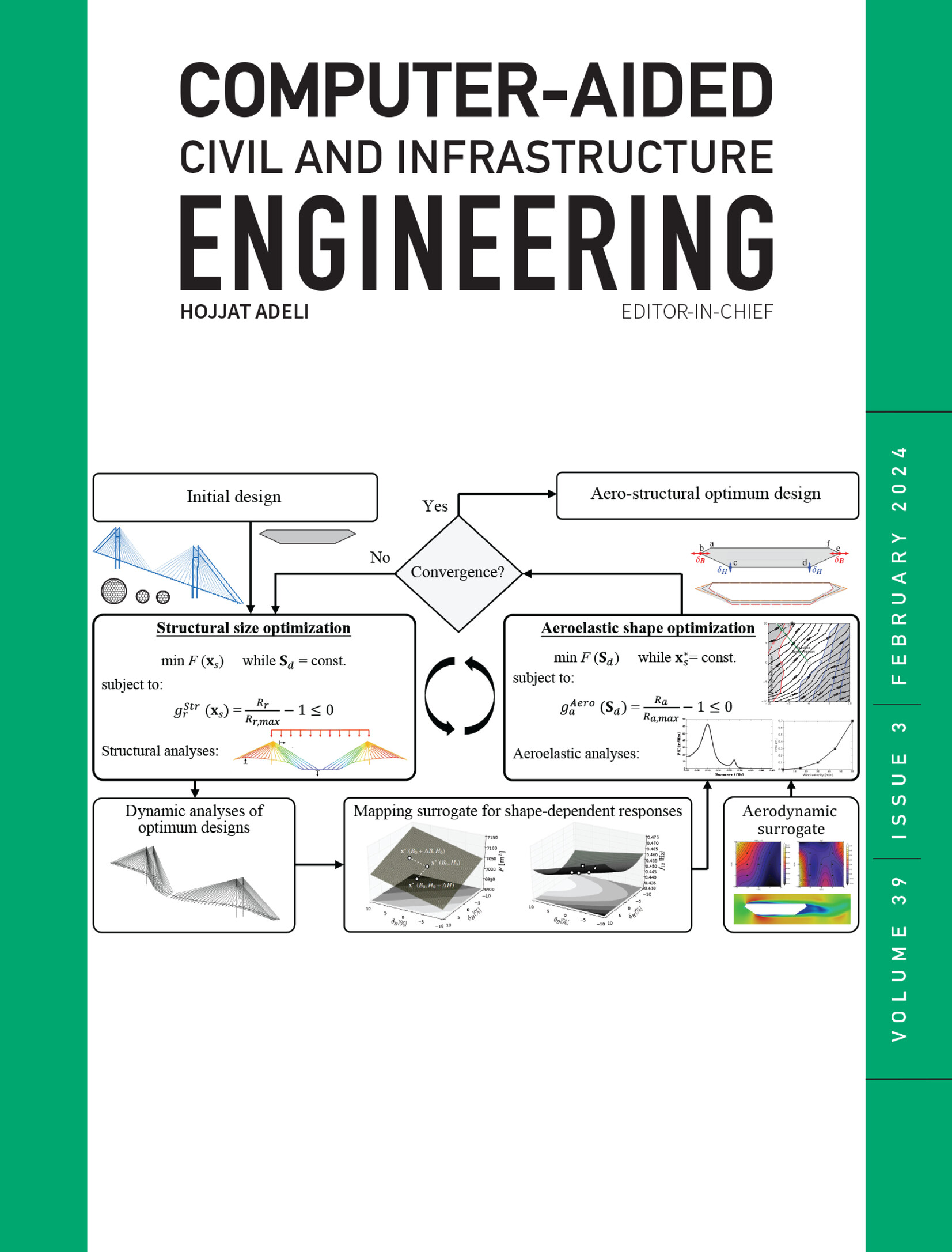Freight rail activity inventory system using a vision‐based deep learning framework
IF 9.1
1区 工程技术
Q1 COMPUTER SCIENCE, INTERDISCIPLINARY APPLICATIONS
引用次数: 0
Abstract
Rail freight serves as a reliable cost‐effective and fuel‐efficient mode for long‐distance ground freight transportation. Existing rail data sources rely heavily on aggregate reports that lead to significant spatiotemporal data gaps for infrastructure planning and regulatory evaluation. This paper presents RailVM—a vision‐based deep learning framework for freight rail monitoring using infrared‐enabled side‐fire cameras. RailVM can accurately identify railcar and locomotive classes and extract unique locomotive tag identifiers for continuous 24/7 monitoring. It introduces three key innovations. The first is a depth‐aware background modeling module that incorporates depth information to improve foreground extraction across diverse environments. The second is an advanced you only look once (YOLO)‐based object‐detection model—rail‐specific‐YOLO—that integrates a triplet attention mechanism and a Rail‐intersection over union loss function to improve the identification of low‐profile railcars. The third is that RailVM enables continuous day–night monitoring using infrared imaging to ensure accurate performance even in low‐visibility conditions. RailVM was designed and validated for independent transferability at major rail freight gateways in California. Remarkably, it reduced gondola count errors from 41% to 2% and achieved under 5% mean error across 14 railcar classes in red, green, and blue as well as infrared modes of operation, outperforming baselines and demonstrating potential for robust real‐world generalization.货运铁路活动库存系统使用基于视觉的深度学习框架
铁路货运是一种可靠、经济、省油的长途地面货运方式。现有的铁路数据来源严重依赖于汇总报告,导致基础设施规划和监管评估的时空数据差距很大。本文介绍了railvm——一种基于视觉的深度学习框架,用于货运铁路监控,使用启用红外的侧火摄像机。RailVM可以准确识别轨道车辆和机车类别,并提取唯一的机车标签标识符,用于连续24/7监控。它引入了三个关键的创新。第一个是深度感知背景建模模块,它包含深度信息,以改善不同环境下的前景提取。第二种是先进的基于“你只看一次”(YOLO)的目标检测模型——轨道特定的YOLO——它集成了三重注意力机制和轨道交叉口联合损失函数,以提高对低姿态轨道车辆的识别。第三,RailVM可以使用红外成像进行连续昼夜监测,即使在低能见度条件下也能确保准确的性能。RailVM设计并验证了在加州主要铁路货运门户的独立可转移性。值得注意的是,它将贡多拉计数误差从41%减少到2%,并在红、绿、蓝以及红外操作模式的14种轨道车辆类别中实现了低于5%的平均误差,优于基线,并展示了强大的现实世界泛化潜力。
本文章由计算机程序翻译,如有差异,请以英文原文为准。
求助全文
约1分钟内获得全文
求助全文
来源期刊
CiteScore
17.60
自引率
19.80%
发文量
146
审稿时长
1 months
期刊介绍:
Computer-Aided Civil and Infrastructure Engineering stands as a scholarly, peer-reviewed archival journal, serving as a vital link between advancements in computer technology and civil and infrastructure engineering. The journal serves as a distinctive platform for the publication of original articles, spotlighting novel computational techniques and inventive applications of computers. Specifically, it concentrates on recent progress in computer and information technologies, fostering the development and application of emerging computing paradigms.
Encompassing a broad scope, the journal addresses bridge, construction, environmental, highway, geotechnical, structural, transportation, and water resources engineering. It extends its reach to the management of infrastructure systems, covering domains such as highways, bridges, pavements, airports, and utilities. The journal delves into areas like artificial intelligence, cognitive modeling, concurrent engineering, database management, distributed computing, evolutionary computing, fuzzy logic, genetic algorithms, geometric modeling, internet-based technologies, knowledge discovery and engineering, machine learning, mobile computing, multimedia technologies, networking, neural network computing, optimization and search, parallel processing, robotics, smart structures, software engineering, virtual reality, and visualization techniques.

 求助内容:
求助内容: 应助结果提醒方式:
应助结果提醒方式:


